Exploring the Enigmatic Mayan Civilization Through its Ruins
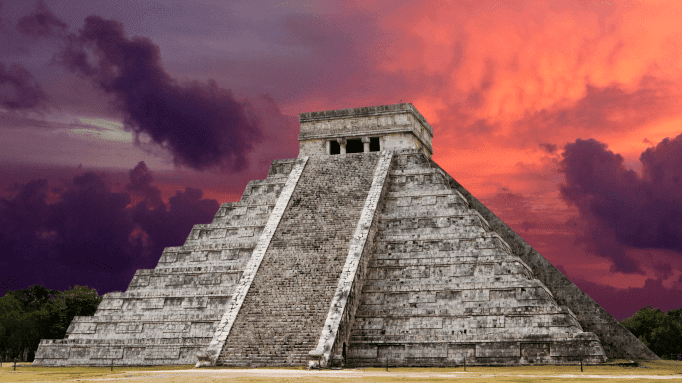
The Rise and Fall of the Mysterious Mayan Civilization
The Mayan civilization is one of the most fascinating ancient cultures that has ever existed. The civilization flourished in what is now Mexico, Guatemala, Belize, Honduras and El Salvador from about 2000 BC until around AD 900 when their cities were mysteriously abandoned.
The Mayans were known for their impressive architectural feats such as massive pyramids, temples and palaces made from stone, intricate carvings on walls, pillars and monuments as well as their advancements in mathematics and astronomy. The origins of the Mayan civilization are shrouded in mystery but it is believed to have begun in the region known as Mesoamerica around 2000 BC. The Maya developed a sophisticated system of writing using hieroglyphics which have only recently been deciphered.
Their society was organized into city-states each with its own ruler or king who often waged war against neighboring cities for control over resources such as water, land and trade routes. Despite this, trade among these city-states also flourished leading to a unique blend of cultural influences from across Mesoamerica.
The Importance of Visiting Mayan Ruins
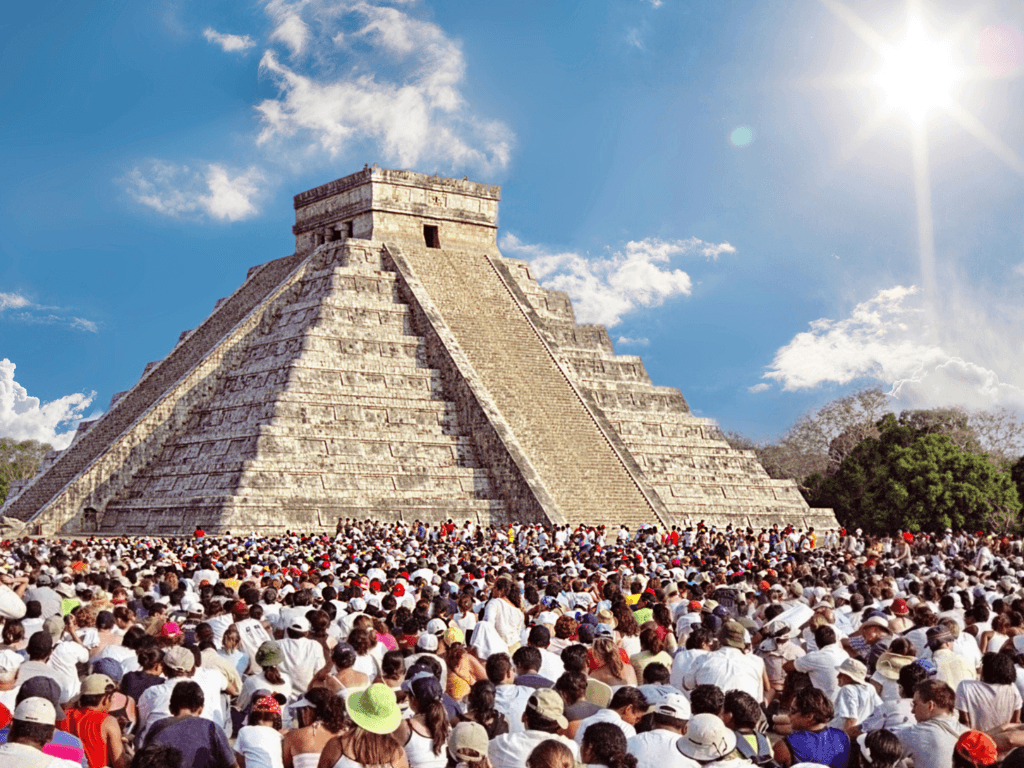
Visiting Mayan ruins provides a unique opportunity to step back in time and marvel at the incredible accomplishments of an ancient culture that managed to build some of the most magnificent structures without modern technology or machinery. These ruins offer a glimpse into a world that was very different from our own yet has left a lasting impact on human history through its art, architecture and cultural practices.
In addition to admiring the impressive physical structures left behind by this civilization, visiting these ruins also provides an opportunity to learn about daily life within this complex society. Ancient texts reveal that they had an extensive knowledge of astronomy which influenced their religious and civic practices.
The ruins left behind also provide insight into the Mayan’s spiritual beliefs which were closely tied to nature and the environment. Another reason that makes visiting Mayan ruins important is the opportunity to witness firsthand the effects of climate change and human interference on these ancient sites.
Many of these ruins are located in dense jungles where they have been exposed to harsh environmental conditions over centuries leading to degradation and erosion. Visiting these ruins can help raise awareness about the importance of preserving and protecting these cultural treasures for future generations.
Visiting Mayan ruins is a unique experience that offers an opportunity not only to admire impressive physical feats but also learn about a complex ancient society that has left its mark on human history. These sites should be preserved and protected as reminders of our shared past and the remarkable achievements of our ancestors.
Planning Your Trip
Visiting Mayan ruins is an exciting adventure that requires careful planning to ensure a successful and enjoyable trip. With so many ruins to explore, it can be overwhelming to decide which ones to visit. Here are some tips on how to plan your trip:
Choosing Which Ruins to Visit
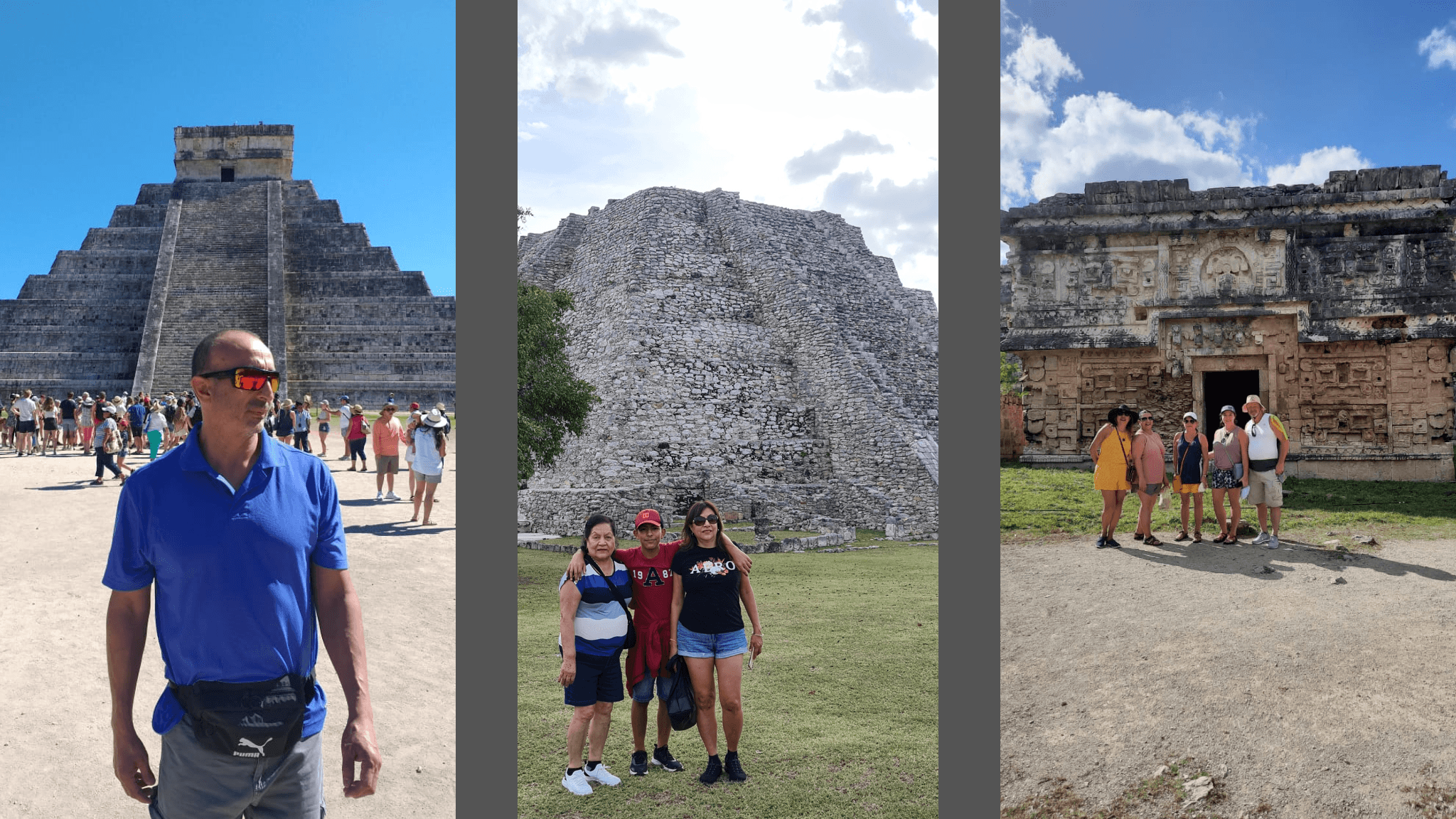
One of the most important decisions when visiting Mayan ruins is choosing which sites to visit. The Yucatan Peninsula of Mexico and parts of Guatemala and Belize are home to some of the most significant and well-preserved Mayan ruins in the world. Here’s a list of the top 8 Mayan ruins to visit in the Yucatan peninsula:
- Chichen Itza is one of the most famous and well-preserved Mayan ruins in the world. It features iconic structures like the impressive El Castillo pyramid, the Temple of Warriors, the Great Ball Court, and the Sacred Cenote. The site showcases the architectural and astronomical expertise of the ancient Maya.
- Tulum ruins are a stunning coastal archaeological site overlooking the Caribbean Sea. Known for its picturesque setting, it features well-preserved structures such as the Temple of the Frescoes and El Castillo. Tulum served as a major trading port during the Mayan civilization.
- Uxmal ruins are a UNESCO World Heritage site renowned for its intricate Puuc-style architecture. The Pyramid of the Magician is its most recognizable structure. Other notable buildings include the Governor’s Palace, the Nunnery Quadrangle, and the House of the Turtles.
- Ek Balam ruins are a lesser-known Mayan site but holds great archaeological significance. It boasts the imposing Acropolis, featuring intricate carvings and a unique entrance. The site also includes a ball court, temples, and a well-preserved jaguar sculpture.
- Coba is an expansive site that features the tallest pyramid in the Yucatan Peninsula, known as Nohoch Mul. Visitors can climb this pyramid for a panoramic view of the surrounding jungle. Coba also has the Grupo Coba, which includes the Ball Court and the Temple of the Paintings.
- Mayapan was one of the last major Mayan cities and served as the political and cultural center of the Yucatan Peninsula. The site contains numerous temples, palaces, and residential structures.
- Edzna is an ancient city located in the southwestern part of the Yucatan Peninsula. The site showcases various architectural styles, including the prominent five-level Pyramid of the Five Stories. Edzna also has a well-preserved ball court and an intricate Temple of the Masks.
- Dzibilchaltun is a Mayan archaeological site known for its Temple of the Seven Dolls, named after small figurines found within. It also features the Xlacah Cenote, where visitors can cool off in the crystal-clear waters. Dzibilchaltun’s Museum of the Maya People provides additional insights into Mayan culture.
Best Time To Visit
The best time to visit Mayan ruins depends on your personal preferences and priorities. The weather in the region is hot and humid year-round but there are certain times when it’s less rainy or less hot.
If you’re looking for cooler temperatures with fewer crowds, consider visiting during the winter months (December through February). However it’s still quite warm during this period so bring light clothing but also a sweater for cool nights.
If you don’t mind braving hotter weather for smaller crowds then summer (June through August) might be your best bet. Keep in mind that during this time period it’s also peak hurricane season so while cheaper flights might be available there may also be flight cancellations due to storms.
What To Bring
When visiting Mayan ruins, it’s important to pack the right gear to ensure a comfortable and safe trip. Be sure to bring lightweight, breathable clothing that can protect you from the sun.
A hat, sunglasses and sunscreen are also essential items for protection against harmful UV rays. Comfortable shoes are a must as you’ll be walking on uneven surfaces and possibly trekking through jungle terrain.
You might also want to bring insect repellent as mosquitos can be a nuisance in certain areas. If you’re planning on exploring ruins on your own, it’s helpful to have a map or guidebook with information about the site’s history and significance.
If opting for a guided tour make sure you have enough cash on hand for tips. Don’t forget your camera to capture all of the stunning views that Mayan ruins have to offer!
Exploring the Ruins
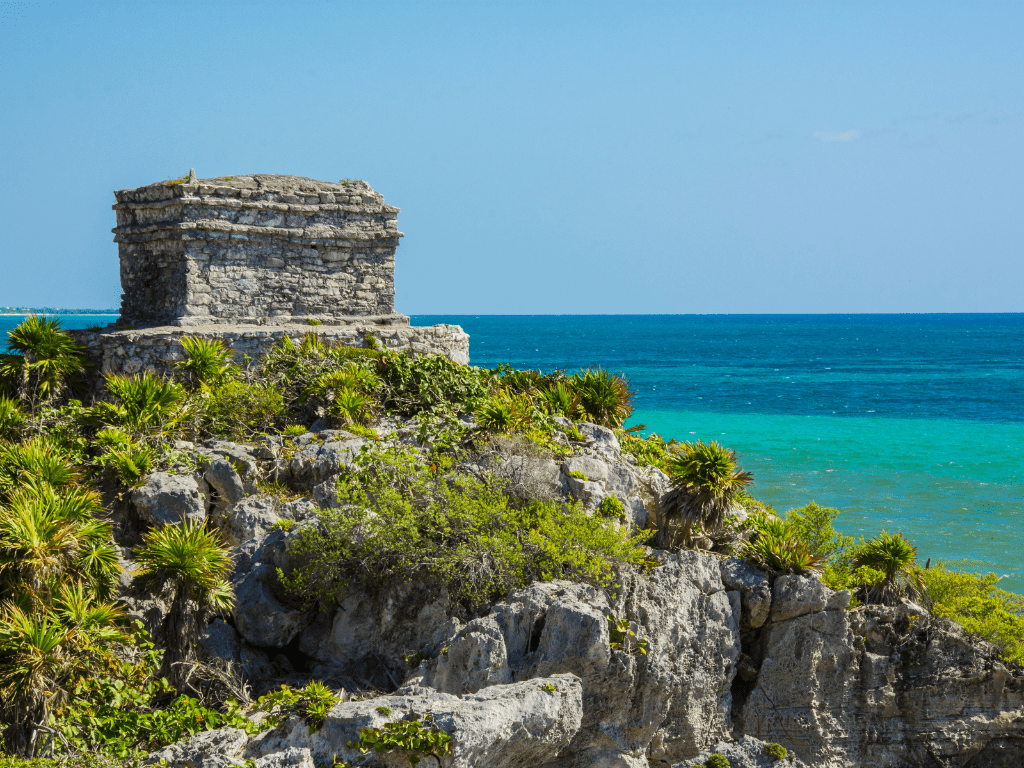
Guided Tours Vs. Self-Guided Tours
When visiting Mayan ruins, there are generally two options for exploring: guided tours or self-guided tours. Both have their pros and cons, and ultimately the choice will depend on personal preference and travel style. Let me explain two ways that visitors can experience ancient Mayan:
- Guided tours offer the benefit of having a knowledgeable guide who can provide historical and cultural context, as well as answer any questions that may arise during the visit. They can also offer a more structured itinerary, ensuring that visitors see all of the main structures and temples within a designated amount of time. However, they are more expensive than self-guided tours, and visitors may feel rushed or unable to explore at their own pace. At every major Mayan Ruins there will be local guides available to contract. You may even find their sales techniques a bit aggressive, lol.
- Self-guided tours allow visitors to explore at their leisure and take in the sites at their own pace. This option is generally less expensive than guided tours. However, without a guide, visitors may miss out on important historical or cultural information about the ruins.
Must-See Structures and Temples
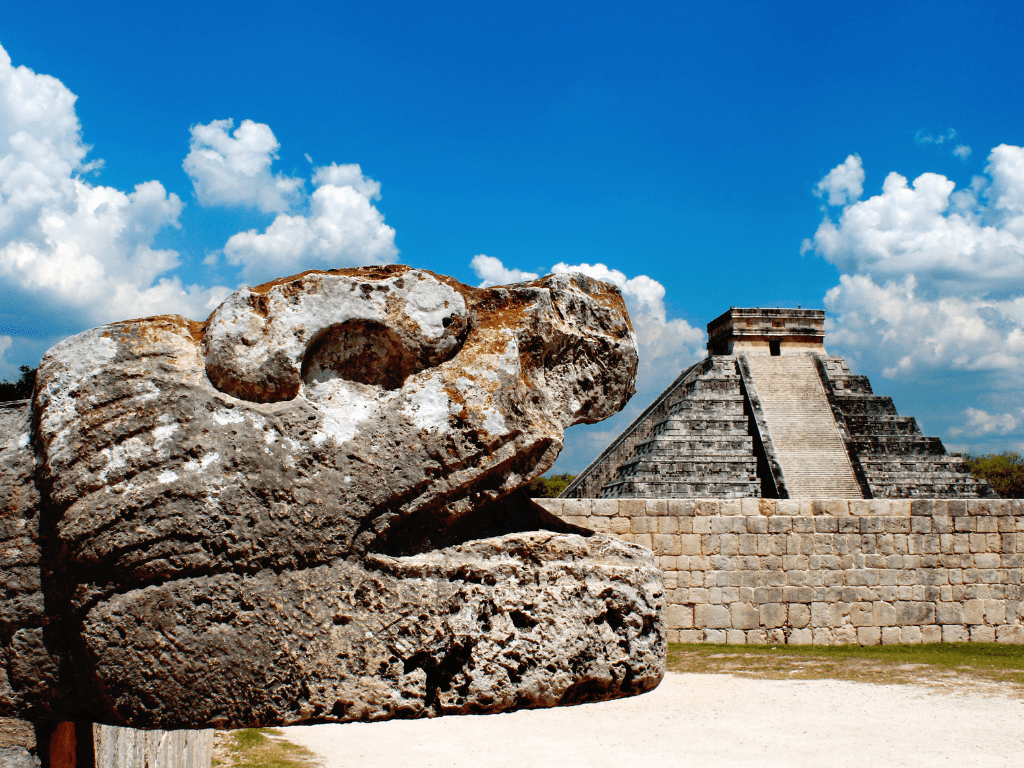
There are many impressive structures and temples to see when visiting Mayan ruins. Some of the most notable include Chichen Itza’s El Castillo (The Pyramid of Kukulcan), Tulum’s Temple of the Frescoes, Tikal’s Temple IV, Uxmal’s Pyramid of the Magician, and Palenque’s Temple of Inscriptions.
El Castillo is perhaps one of the most iconic structures in all of Mexico. Standing 79 feet tall with four staircases leading up to its summit platform, it served as both an astronomical observatory and temple to Kukulcan – the feathered serpent god.
The Temple of Frescoes in Tulum is home to some beautiful original murals depicting various aspects of daily life for ancient Mayans such as farming practices. Temple IV stands tall at Tikal and offers visitors stunning views of the jungle canopy.
Due to its height, it is also known for being a great spot to watch the sunrise or sunset. The Pyramid of the Magician in Uxmal is notable for its unique rounded corners and intricate carvings, while Palenque’s Temple of Inscriptions contains a vaulted tomb believed to have been built for King Pakal.
Lesser-Known Areas to Explore
While the main structures and temples are certainly impressive, there are also many lesser-known areas to explore when visiting Mayan ruins. These areas may offer a quieter atmosphere with fewer crowds, as well as unique perspectives on Mayan society.
At Chichen Itza, visitors can explore La Iglesia (The Church), which served as a temple dedicated to the god Itzamna. Its interior walls contain detailed carvings depicting various deities and mythological creatures.
In Tikal’s Central Acropolis, visitors can see where the Mayan royalty resided – including palaces, royal residences, and even ancient ball courts where they would play games similar to modern-day basketball. At Ek Balam, visitors can climb the Acropolis pyramid which features intricate stucco designs and provides wonderful views over Yucatan Peninsula’s jungle canopy.
Exploring Mayan ruins offers an opportunity not only to see some incredible ancient structures and temples but also learn about an entire society that thrived thousands of years ago. Whether choosing guided tours or self-guided tours or simply wandering off the beaten path to discover lesser-known areas on your own- there is so much waiting here for any traveler willing enough to seek it out.
Learning about Mayan Culture
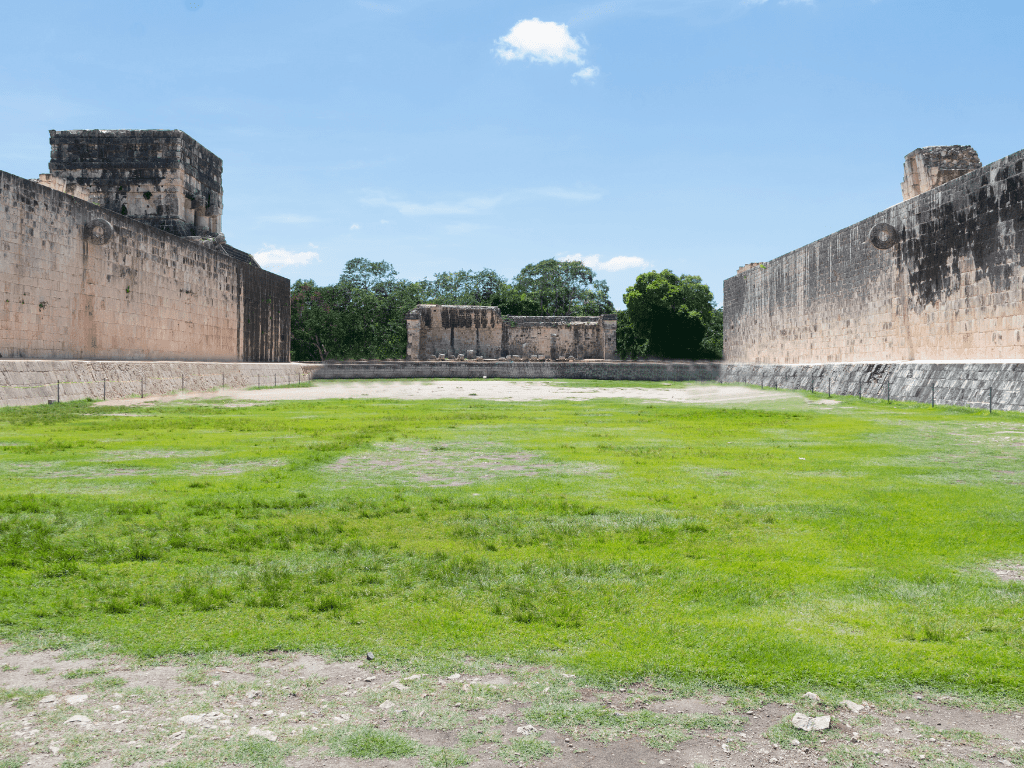
Unlocking the Meaning Behind the Structures and Carvings
When visiting Mayan ruins, it is essential to understand that every structure and carving has a particular meaning behind it. Ancient Mayans were keen on symbolism, and each structure had a purpose beyond its mere physical appearance. For example, Chichén Itzá’s El Castillo is not just a pyramid with stairs leading to the top; it has four sides with 91 steps each plus one step at the very top adding up to 365 steps in total, symbolizing the days of the year.
The carvings found throughout the ruins can also give insight into ancient Mayan beliefs and practices. Many carvings depict gods or important figures in their society or illustrate significant events in their history.
Understanding Daily Life in Ancient Mayan Society
While understanding the significance of structures and carvings is important, it is also essential to learn about daily life for ancient Mayans. Visitors should take time to read interpretive signs throughout the ruins to gain insight into how they lived.
For example, visitors can learn about the foods they ate, such as corn being a staple crop used for tortillas and tamales. Learning about their way of life will help visitors appreciate their culture even more.
The Importance of Preserving and Protecting the Ruins
Preserving History for Future Generations
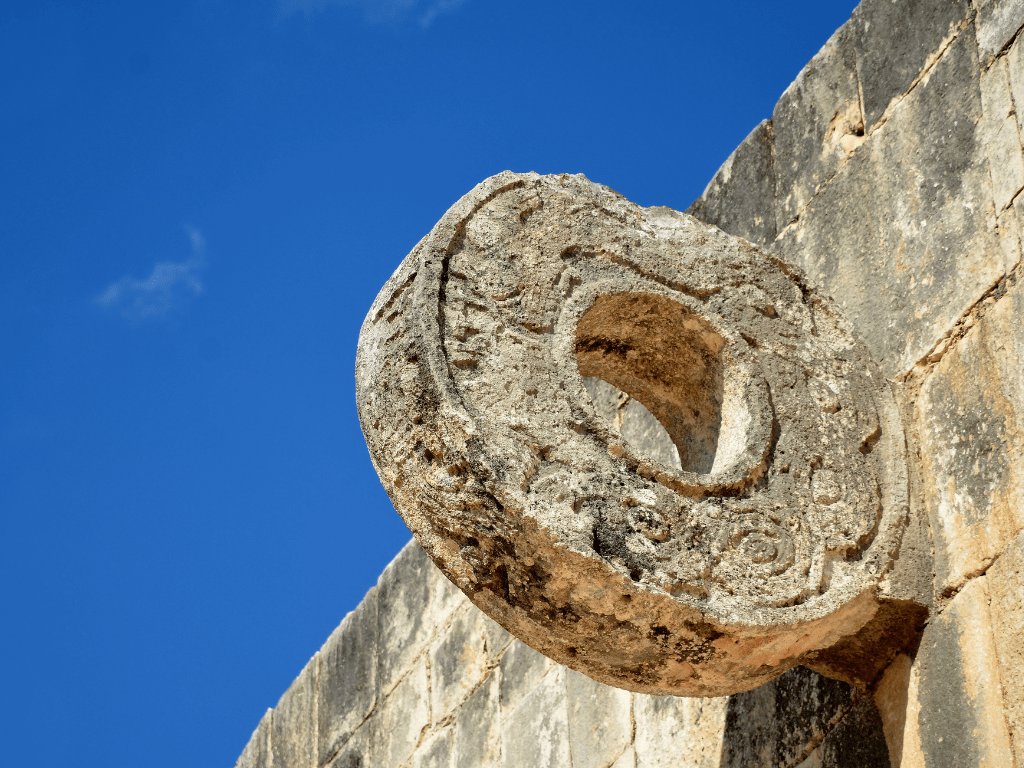
Mayan ruins are fragile historical sites that must be carefully preserved for future generations’ benefit. Every visitor must play a role in protecting these sites by respecting rules such as not climbing on structures or touching any artifacts found within them. By respecting these guidelines, visitors help prevent damage from occurring while allowing future generations to continue learning about this ancient civilization.
The Threats Facing These Historical Sites
Unfortunately, Mayan ruins face several threats such as natural erosion, looters searching for artifacts to sell on the black market, and over-tourism. The rise in visitors has a direct impact on the sites’ physical stability and can lead to cultural degradation if not well-managed. Tourists should be aware of these threats and undertake responsible tourism by ensuring they only visit approved sites, respect the rules governing them, and support conservation efforts.
The Role of Visitors in Preservation
To ensure that Mayan ruins are preserved for future generations, every visitor must play a role. Tourists should support conservation efforts by visiting only approved sites and participating in preservation events organized by nonprofit organizations. By doing so, tourists help preserve ancient culture while simultaneously enjoying their travel experience.
Practical Tips for Visiting Mayan Ruins
Staying Safe in the Jungle Environment
Visiting Mayan ruins isn’t just about exploring ancient structures, it’s also about immersing yourself in the lush tropical landscape of Central America. However, this also means you need to take precautions to stay safe. A few safety tips include:
– Wear comfortable, closed-toe shoes with good grip to navigate the uneven terrain – Dress for hot and humid weather, while still protecting yourself from mosquito bites and sunburn
– Bring plenty of water and snacks to stay hydrated and fueled during your visit – Be aware of your surroundings at all times, as there may be dangerous wildlife such as snakes or spiders
It’s also important to be mindful of the local customs and traditions. For example in some areas it is considered disrespectful to remove hats or sunglasses while inside a temple or structure.
Recommendations for Accommodations and Transportation

When planning a trip to visit Mayan ruins, you’ll need to consider where you’ll stay and how you’ll get around. Here are a few recommendations: – Look for accommodations near the ruins so you can easily access them early in the day before they get too crowded
– Consider staying at an eco-lodge or sustainable hotel that offers tours or activities related to Mayan culture – Depending on your budget, there are options ranging from camping near the ruins to staying at luxury resorts
For transportation, renting a car may be a convenient option if you plan on visiting multiple ruins over several days. Alternatively, local buses or private shuttles can also be arranged.
Local Cuisine
One of the best ways to immerse yourself in local culture is through food! Traditional Mayan cuisine features ingredients such as corn, beans, squash and chilies – all staples of the ancient Mayan diet.
Try local street food such as tamales, pupusas (a stuffed tortilla) or empanadas. For a more formal dining experience, look for restaurants offering traditional Mayan dishes such as cochinita pibil (slow roasted pork) or pollo pibil (slow roasted chicken).
Cultural Experiences
In addition to exploring the ruins themselves, there are plenty of other cultural experiences to be had in the surrounding areas. Consider: – Visiting local markets to purchase handmade crafts and textiles
– Participating in a traditional Mayan ceremony or ritual – Taking a cooking class to learn how to prepare traditional Mayan dishes
– Attending a local festival or event celebrating Mayan culture By taking advantage of these opportunities, you’ll be able to gain an even deeper understanding and appreciation for the rich history and traditions of the Maya people.
Conclusion:
The Adventure of a Lifetime Awaits
Visiting Mayan ruins can be a truly unique and enriching travel experience. It provides an opportunity to connect with a rich history and culture that dates back centuries.
The sheer size and complexity of the structures are awe-inspiring and remind us of the incredible ingenuity of ancient civilizations. The jungle environment in which many of these ruins are located only adds to the adventure.
Preserving History for Future Generations
While visiting Mayan ruins is an incredible experience, it’s important to remember that these structures are fragile and require protection. Over time, natural disasters, looting, and other human activities have caused significant damage to many of these ancient sites. By visiting Mayan ruins responsibly, we can help preserve them for future generations to enjoy.
Encouraging Sustainable Tourism

Tourism is an important source of income for many communities surrounding Mayan ruins. By supporting local businesses, we can contribute to their economy while also promoting sustainable tourism practices that benefit both visitors and locals alike. This includes staying in eco-friendly accommodations, supporting fair-trade initiatives, and respecting local customs.
An Experience Like No Other
Visiting Mayan ruins is not your typical beach vacation. It’s an adventure that requires physical exertion but offers unparalleled rewards in terms of cultural enrichment and personal growth.
Whether you’re traveling solo or with a group, there’s something magical about exploring these ancient sites in person. From the towering temples at Chichen Itza to the remote jungle pyramids at Tikal, each site has its own unique character that will leave a lasting impression on you.
So what are you waiting for? Start planning your next adventure today!
Visit Mayan ruins with an open mind and a sense of awe and wonderment at all that you will see and learn. It will be an experience like no other, and one that will stay with you for the rest of your life. Mayan ruins are scattered across all of Yucatan. Find out about other Yucatan adventures with us.
